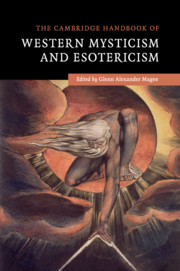Book contents
- Frontmatter
- Dedication
- Contents
- Acknowledgments
- Editor's Introduction
- List of contributors
- I ANTIQUITY
- II THE MIDDLE AGES
- III THE RENAISSANCE AND EARLY MODERNITY
- 12 Renaissance Hermetism
- 13 Christian Kabbalah
- 14 Paracelsianism
- 15 Rosicrucianism
- 16 Jacob Boehme and Christian Theosophy
- 17 Freemasonry
- 18 Swedenborg and Swedenborgianism
- 19 Mesmer and Animal Magnetism
- IV THE NINETEENTH CENTURY AND BEYOND
- V COMMON THREADS
- Suggestions for Further Reading
- Index
- References
17 - Freemasonry
from III - THE RENAISSANCE AND EARLY MODERNITY
Published online by Cambridge University Press: 05 May 2016
- Frontmatter
- Dedication
- Contents
- Acknowledgments
- Editor's Introduction
- List of contributors
- I ANTIQUITY
- II THE MIDDLE AGES
- III THE RENAISSANCE AND EARLY MODERNITY
- 12 Renaissance Hermetism
- 13 Christian Kabbalah
- 14 Paracelsianism
- 15 Rosicrucianism
- 16 Jacob Boehme and Christian Theosophy
- 17 Freemasonry
- 18 Swedenborg and Swedenborgianism
- 19 Mesmer and Animal Magnetism
- IV THE NINETEENTH CENTURY AND BEYOND
- V COMMON THREADS
- Suggestions for Further Reading
- Index
- References
Summary
Introduction
Perhaps the best way to characterize Freemasonry is in terms of what it is not, rather than what it is. First of all, it is not a religion, at least not in the Western sense of the concept. One neither converts to Freemasonry, nor does it have any teachings or dogmas. If a candidate for Freemasonry belongs to a religion, this does not change when he becomes a Freemason. Moreover, the Masonic “work” consists in the initiation rituals that change the status of the candidate, first from an outsider to an Apprentice Freemason, then to a Fellow of the Craft, and finally to the rank of Master Mason. Different systems of so-called “higher degrees,” developed in the course of the centuries, offer still more initiation rituals. Although the rituals have changed in the course of time (and in different ways in different countries, producing varying traditions throughout the world), they are guarded as precious treasures, handed down from generation to generation.
However, there exists no official interpretation of the rituals which is held to be universally valid. Every member has the right – and, indeed, the duty – to interpret them in his own way. Consequently, Freemasonry has no particular intrinsic aim. All it aims at is the initiation of new members – on the one hand because it would disappear if it acquired no new members, but much more importantly because Freemasonry simply is the practice of these rituals, which are no longer truly secret. Today one can find most of them on the Internet, including the so-called traditional secrets: the words, signs, and hand grips by which the members of a particular degree can recognize one another. The only secret – which will always remain, because it cannot be divulged – is what it is like to experience these rituals as a candidate. Freemasonry, then, is first and foremost a method for inducing a particular kind of experience in candidates. Two methods, in fact, are involved: the initiation method and the allusive method. Three sorts of symbolism also play a role: building symbolism, light symbolism, and center symbolism.
- Type
- Chapter
- Information
- The Cambridge Handbook of Western Mysticism and Esotericism , pp. 200 - 210Publisher: Cambridge University PressPrint publication year: 2016

